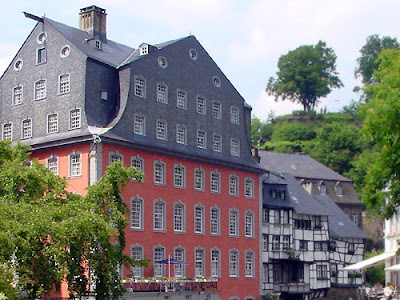Ornamental Woodcarver
The Museum aan het Vrijthof in Maastricht (Netherlands)
Formerly Spanish Government Museum.
The pictures were taken for the major restoration of 2010-2012.
Visiting Museums and Castles is Probably the main source of inspiration for the Ornamental Woodcarver.
These are places where the craftsman gets his ideas, he is looking for new challenges and always new unexpected surprises, and even after 25 years still feels something new to learn.
Exploring and studying ,looking at problems and how your colleagues 300 years ago solved them, their knowledge of tasteful proportions used in the interior decoration and their knowledge of carving techniques.
In this blog item we visit the Museum aan het Vrijhof in Maastricht.
Museum aan het Vrijthof takes its name from Maastricht's most familiar square, on witch the Museum occupies a prominent place. The Museum is located in a sixteenth-century chapter house called the Spanish Government House.
The coats of arms above the windows on the first flour and the carved relief ornamented by portrait medallions of Charles V and his wife on the inner courtyard side recall the fact that this King of spain / German Kaizer / Duke of Brabant had his pied-à-terre in the Spanish Governement House.
In the Museum aan het Vrijthof, the visitor can wander through the eighteenth-century period rooms to discover how the Maastricht elite lived in this period and to view the collection of eighteenth-century pistols, clocks, furniture and table silver made in the city of Maastricht.
The museum aan het Vrijthof has regular exhibitions devoted to themes from five centuries of Maastricht arts and crafts.
 |
| The Museum aan het Vrijhof before the restoration of 2010-2012 |
More information Museum aan het Vrijhof : WEBSITE
 |
| WEBSITE |





















































